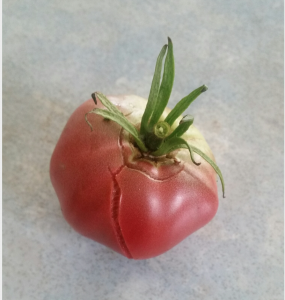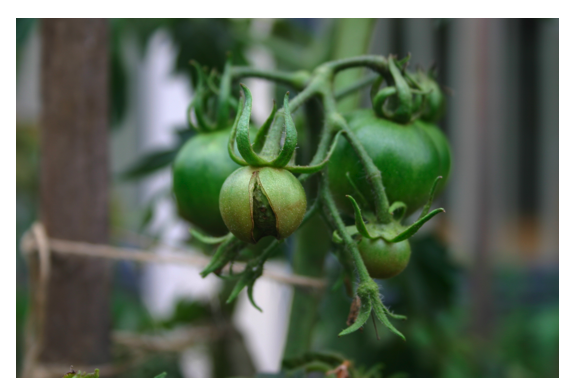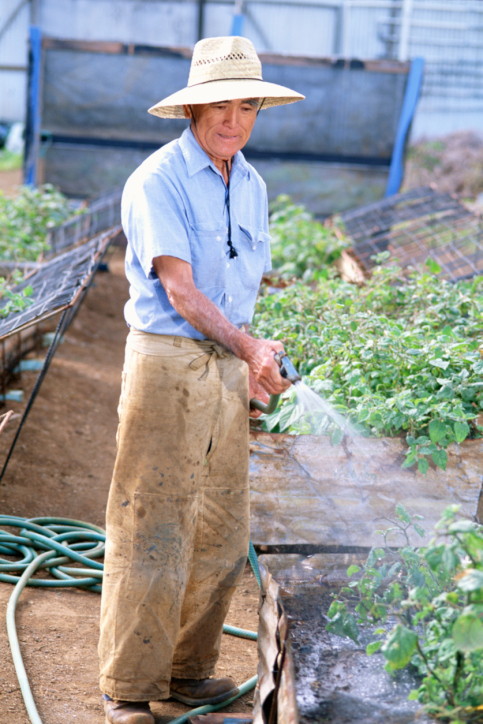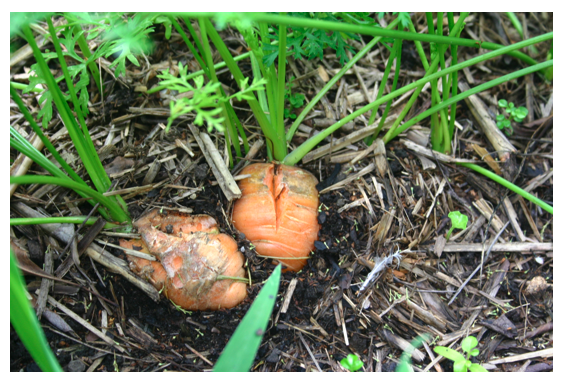 Sometimes you might find that your prized home grown tomato has burst its skin, splitting right down the centre and revealing the flesh. Has this ever happened to you? Well it’s happened to some of my tomatoes this season.
Sometimes you might find that your prized home grown tomato has burst its skin, splitting right down the centre and revealing the flesh. Has this ever happened to you? Well it’s happened to some of my tomatoes this season.
It’s a common problem and it’s the result of too much water. If you have experienced a sudden downpour of rain then this is the most likely culprit. The excess moisture taken up by the plant, often coupled with warm temperatures promotes accelerated growth. It’s when this growth is too much for the plant to handle that splitting occurs.
Also known as “cracking”, the split can also radiate from the stem. It seems to occur more often close to maturity rather than earlier in the plant’s development. As the tomato fruit gets close to maturity, the skin may start to harden off. With a sudden burst of growth, the hardened surface is torn apart, almost like stretch marks on a heavily pregnant woman.
If the split happens earlier in development it tends to be deeper, just like the split in my tomato here.

The problem with this split is that it becomes vulnerable to fungal attack. So keep an eye on it. If the fruit has turned orange or yellow, it may continue to develop without any secondary fungal attack and you’ll still be able to eat it.
If you haven’t experienced any heavy rain, then the problem may be your watering techniques. When a tomato plant has lots of water followed by very little water and then followed again by lots of water, then this inconsistency can prove problematic to the developing fruit. Aim to be consistent with your irrigation, perhaps even invest in a timer on your watering system. Regular, similar amounts of water are required for consistent growth and development of fruit.

Good quality organic fertiliser used on the garden is also good practice. Organic fertilisers like manure and compost feed the plant when it needs it. Soluble and synthetic fertilisers will feed the plant directly and can put on too much growth if given too often or too strong. Fertilisers that are high in nitrogen will encourage soft sappy growth and will make plants more vulnerable.
Sometimes you might find that it’s only happened to some of your tomatoes and not others. Take note of the variety because it is suggested that some are more vulnerable than others.

You may also find this happening to other crops in the garden too. Here’s a carrot that shares the same problem in my garden. Most root crops are also vulnerable to this type of splitting, not just your humble tomato.




 Twitter
Twitter Facebook
Facebook